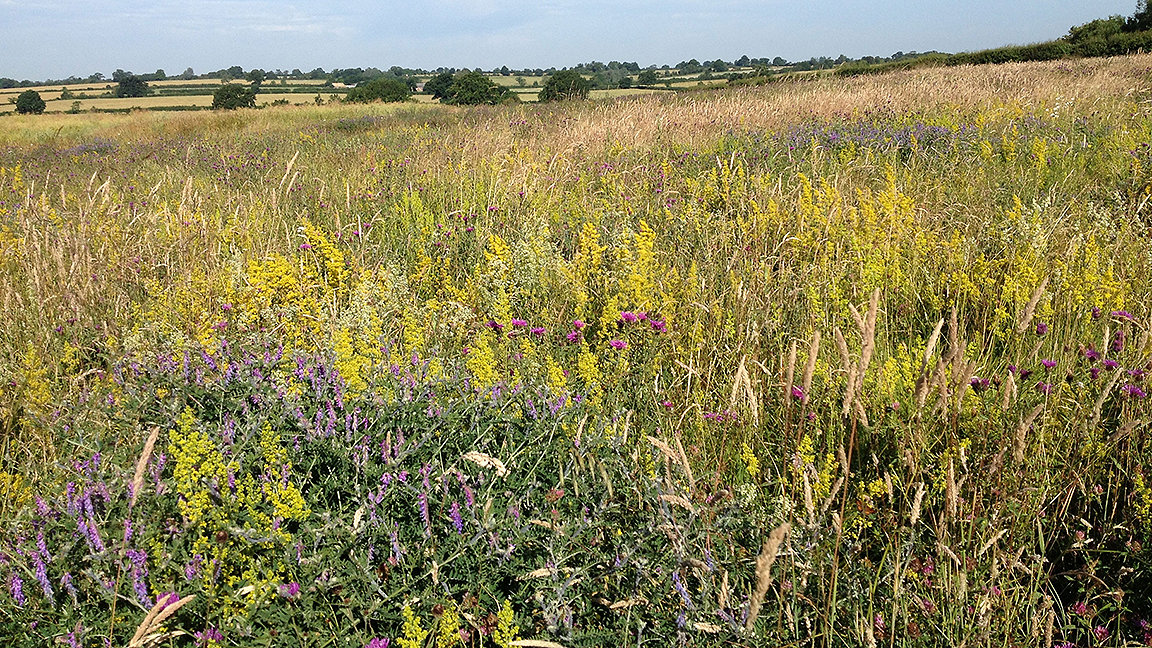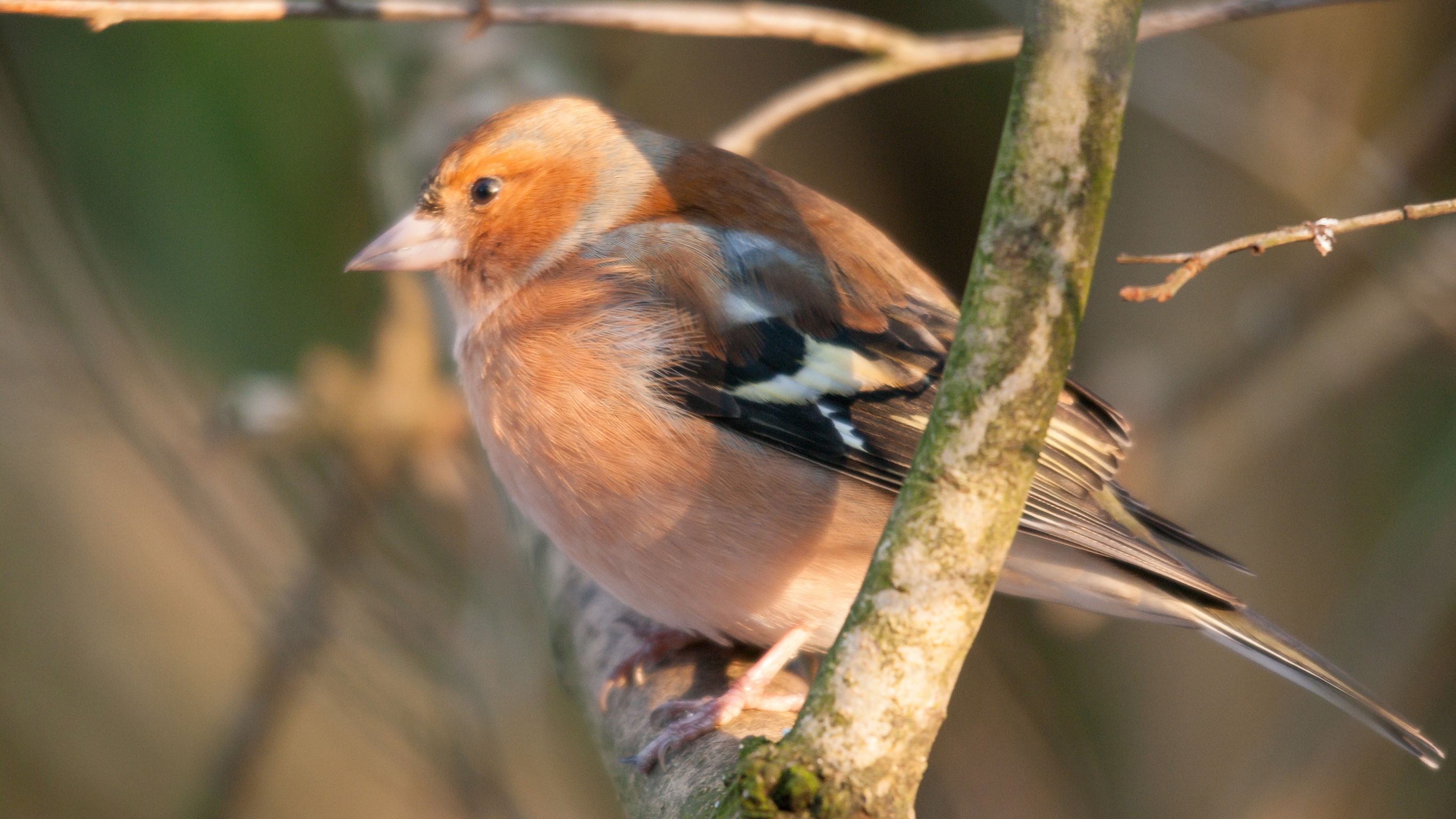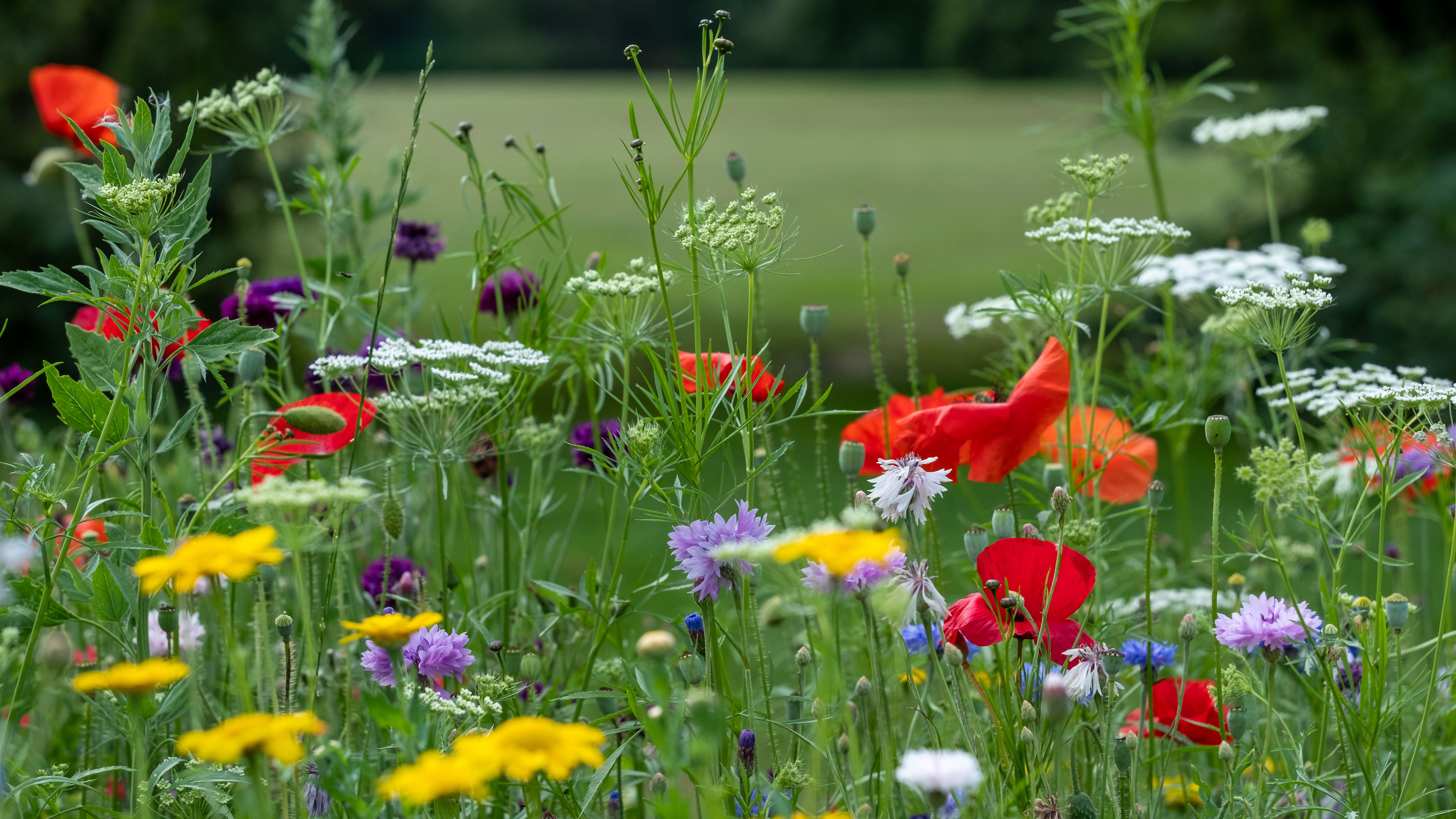
South of Buckingham, the view is typical of modern English agricultural landscapes. In spring and summer, the fields are green with growing wheat or brilliant yellow oilseed rape. Large fields are bordered by hedgerows from which mature oak and ash trees rise, remnants of the complex network of ancient field boundaries that divided this landscape before the post-war green revolution made it profitable to plough up the heavy clay soils.
Skylarks and yellowhammers sing, and bumblebees and butterflies meander along the hedgerows, searching for weeds and wildflowers at the edges of the productive cropped fields. But this type of landscape has come at a cost.
Experiment seeks to reverse biodiversity decline
During the latter half of the 20th century, many populations of farmland wildlife declined dramatically, driven by the loss of habitats such as hedgerows and field margins, and more intensive management of crops. On the Hillesden Estate, therefore, a unique experiment aimed to reverse these declines.
The core mechanism for redressing biodiversity loss on farmland for the past 30 years or so been the use of agri-environment schemes (AESs).
In such schemes, the government financially compensates farmers for the cost of creating wildlife habitats such as patches sown with wildflower margins and seed-bearing crops to feed birds in winter, or for altering farming practices by, for example, leaving stubble over winter.
Some argue that farming systems instead need fundamental change, with the adoption of organic agriculture, or the farming of only the most productive land while letting the remainder revert to natural habitats; the latter commonly referred to as rewilding.
But we wanted to explore the middle ground between intensive and organic agriculture to see what the average farmer can do to improve their land for wildlife, and whether they can make a difference without significantly reducing food production.
AES interventions over a decade
In 2005, the UK Centre for Ecology & Hydrology (UKCEH) and the Wildlife Farming Company began a decade-long DEFRA-funded experiment at Hillesden, a typical commercial farm of around 1,000ha.
The estate was split into sections receiving a different level of AES intervention, each containing several fields.
The experiment focused in particular on the AES options open to all farmers, including widely applicable grass margins, patches of annual or perennial wildflowers, and seed-bearing plants for seed-eating birds. The area of land taken out of food production was low, ranging between 3% and 8% depending on the particular treatment.
UKCEH then deployed a comprehensive programme of monitoring, counting numbers of breeding and wintering birds, butterflies, bees, moths, small mammals and other species, as well as measuring soil health and crop productivity. Although the experiment was modified and AES options moved around the farm, a core level of monitoring continued at Hillesden until 2017.
The experiment was unique in terms of the length of time for which an AES scheme was monitored and the extensive range of species studied. In addition, such monitoring had not previously taken place on an operational commercial farm.
The results of this monitoring, comparing areas of the estate with different AES uptake, demonstrated that providing such habitats could have a dramatic, positive effect on many groups. Pollinating insects were more abundant, for instance, in AES flower margins that provided them with vital nectar and pollen sources.
Similarly, several species of seed-eating birds were attracted to the patches sown with seed-bearing crops in winter, and then showed high numbers in these areas in the breeding season. Small mammals, an important food source for birds of prey such as the kestrel and barn owl, showed much higher numbers and richness of species in areas with abundant grassy margins provided under AESs.
Long-term monitoring also showed that these benefits came at no net cost to overall farm productivity. Although areas were removed from production, this was compensated by targeting low-yield and hard-to-farm areas. There was also an increased yield from some crops on the remaining area, as pollinators and predators of crop pests living in other habitats provided beneficial services.
'Long-term monitoring also showed that these benefits came at no net cost to overall farm productivity'

Chaffinch, © Alan Lawlor
Analysis confirms long-term species restoration
Comparisons between different areas of the farm tend to have two limitations, though. First, it is always possible that wildlife simply moved to the AES areas from parts of the farm without AES options, and that there was no net change in populations. Second, even if populations did change, perhaps this was just a short-lived boost with no potential to reverse declines.
UKCEH results for some groups suggested potential longer-term benefits – for example bumblebee colonies in parts of the landscape with AES were shown to have a greater chance of producing queens that survive to found their own colonies in the following year.
However, a 2022 paper analysed the bird and butterfly monitoring sites that had been consistently monitored during the ten years of the study, and demonstrated long-term benefits at population level. By analysing these sites, UKCEH proved that many species showed a long-term increase at Hillesden that was greater than the trends in equivalent farm landscapes without AES, and that population trends on the estate were stable compared to declines in these equivalent landscapes.
Our long-term monitoring found increases of a third across populations of all bird species at Hillesden between 2006 and 2016, compared to an average of just under 13% at other control sites without AES, and 40% among all butterflies between 2009 and 2017, compared to 21% elsewhere.
Seed-eating birds that did particularly well included the common linnet, whose numbers more than doubled at Hillesden. Other species that fared better there compared to other sites included yellowhammer and chaffinch. The shelter provided by hedges and grass margins also helped birds that usually feed on insects, including great and blue tits, whose numbers were up 88% and 73% respectively.
In terms of butterfly species, numbers of Gatekeepers, which feed on grasses, and the green-veined whites, which feed on wildflowers in field margins, doubled over the period studied.

Gatekeeper butterfly © John Redhead
Estate could serve as landscape exemplar
Of course, the study at Hillesden does not suggest that all farmland biodiversity issues can be resolved by AESs. Not all species showed clear responses to these habitats, and there are many rarer species likely to require specific targeted management or wider-scale habitat restoration to reverse their declining numbers.
But for many species, especially those that historically thrived in the typical English farm landscapes of Hillesden, the results strongly suggest that by setting aside relatively small proportions of land to create habitats, individual farmers can make a big difference without the need to alter their farming system fundamentally or face major losses in productivity.
In future, perhaps the landscape at Hillesden will become typical not just for its crops and hedgerows but for fields surrounded by colourful patchworks of wildflowers, grasses, and seed-bearing plants, and for the associated increase in wildlife diversity.
'By setting aside relatively small proportions of land to create habitats, individual farmers can make a big difference'
Free online tools for farmers
Scientists at the UKCEH, a research institute carrying out environmental science on water and land and in air, have been working with farmers for more than 20 years to test innovative, regenerative agricultural systems that are productive and resilient to future environmental shocks. Their focus is on maintaining and enhancing healthy soils, clean water, pollination and natural pest control.
The scientists provide online tools and data for planning future land use free of charge, to benefit production while minimising conflicts with provision of other ecosystem services. This includes E-Planner, a web-based tool that combines satellite and aerial imagery with national-scale environmental data sets, to help farmers identify the most suitable places for different environmental management options through interactive maps.
UKCEH is building on this long-term research with a new five-year project, AgZero+, to support the UK's transition towards home-grown food production that is sustainable, carbon-neutral and has a positive effect on nature.

